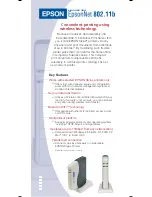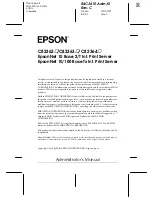
Chapter 3: Serial Port, Device and User Configuration
28
3
SERIAL PORT, HOST, DEVICE & USER CONFIGURATION
The console server enables access and control of serially-attached devices and network-attached devices
(hosts). The administrator must configure access privileges for each of these devices and specify the
services that can be used to control the devices. The administrator can also set up new users and specify
each user’s individual access and control privileges.
This chapter covers each of the steps in configuring network connected and serially attached devices:
•
Serial Ports – setting up protocols used serially connected devices
•
Users & Groups – setting up users and defining the access permissions for each of these
users
•
Authentication – this is covered in more detail in Chapter 8
•
Network Hosts – configuring access to local network connected computers or appliances
(hosts)
•
Configuring Trusted Networks - nominate IP addresses that trusted users access from
•
Cascading and Redirection of Serial Console Ports
•
Connecting to power (UPS, PDU, and IPMI) and environmental monitoring (EMD) devices
•
Serial Port Redirection – using the PortShare windows and Linux clients
•
Managed Devices - presents a consolidated view of all the connections
•
IPSec – enabling VPN connection
•
OpenVPN
•
PPTP
3.1
Configure Serial Ports
The first step in configuring a serial port is to set the
Common Settings
such as the protocols and the
RS232 parameters that are to be used for the data connection to that port (e.g. baud rate).
Select what mode the port is to operate in. Each port can be set to support one of these operating modes:
•
Disabled mode is the default, the serial port is inactive
•
Console server mode enables general access to serial console port on the serially attached
devices
















































